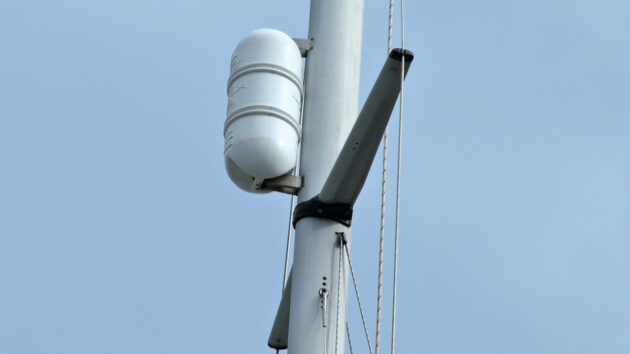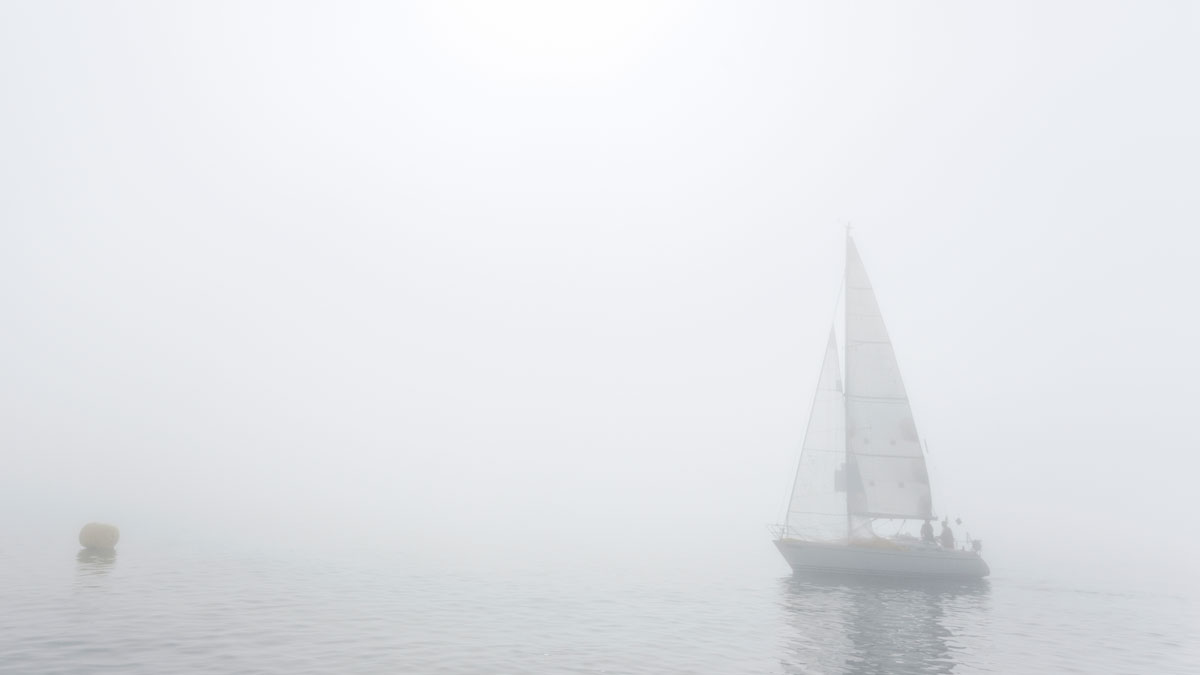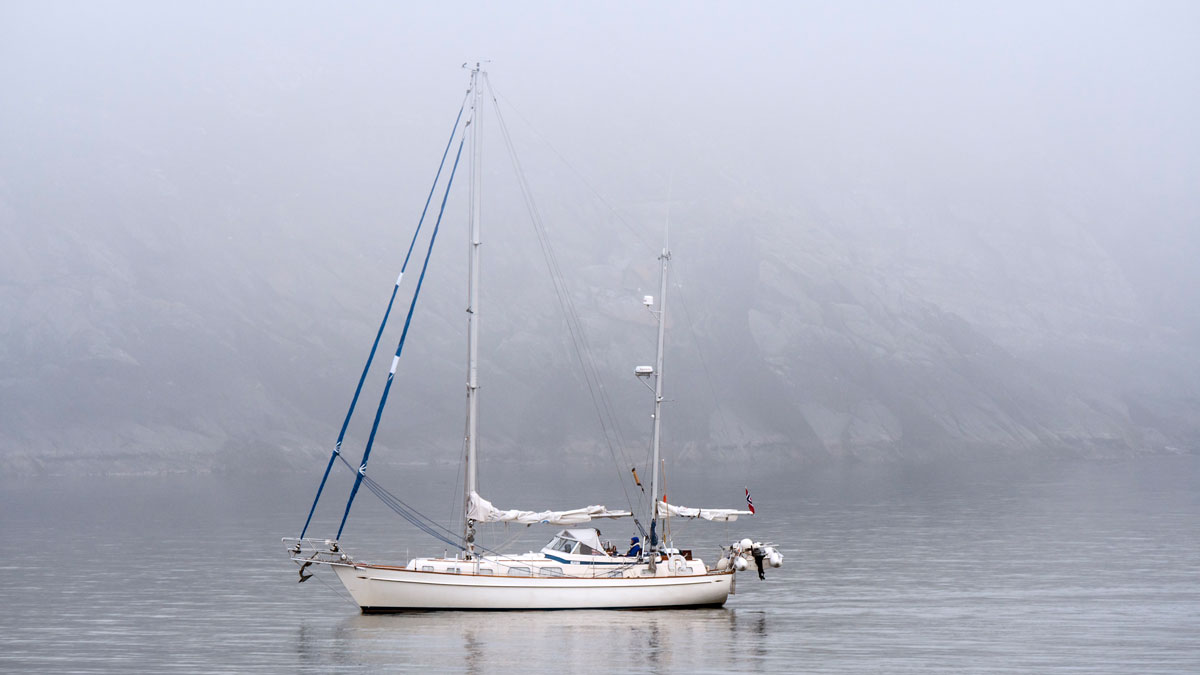Simon Hampton-Matthews, chair of the Cruising Association’s RATS committee, discusses radar reflectors and whether they’re still the best way to be seen on the water
Consulting with the Cruising Association’s Regulatory & Technical Service group (RATS) recently, a CA member asked which radar reflector he should fit to his boat.
This topic is probably third on the list of contentious boating topics (after flag etiquette and which anchor is best) but with this subject at least we benefit from some empirical, laboratory-based testing that is hard to refute.
Radar reflector: regulations
The publication of the Maritime and Coastguard Agency’s Marine Guidance Note 349 in September 2007, amended on 4 October 2022, repeated the recommendation that all UK-registered boats should carry a radar reflector, saying: ‘All small craft should correctly and permanently install a radar reflector, either passive or active (powered), that meets British Standard BS EN ISO 8729:1998 (ISO standard 8729:1997); and Owners of vessels under 15m overall length should, where practicable, fit the most effective and appropriate reflector for their circumstances’.
This guidance repeats the SOLAS Chapter V Regulation 19 2.1.7 requirement for all ships of less than 150 gross tonnage to, if practicable, ‘have a radar reflector to enable detection by ships navigating by radar at both 9 and 3GHz”.
This applies to all boats whatever their country of registration.

Just because you have a radar reflector, doesn’t mean you will be seen. Always keep a proper lookout. Credit: Graham Snook/Future
The guidance note was issued after the 25ft sailing yacht Ouzo was run down by a P&O ferry off the Isle of Wight in 2006, resulting in the death of her crew.
Note the words used: permanently – not just carried in a locker and hoisted when conditions dictate (so might be forgotten); practicable – in the event of an incident, the owner without a reflector might be asked to justify why it was not practicable to install one.
Studies were carried out at the time of the Ouzo investigation, the most comprehensive being by defence contractor QinetiQ. RATS has not carried out a technical evaluation, so its guidance relies on the QinetiQ report which is now 17 years old.
However, there seems little progress or advancement since then, so the CA considers it still relevant.
Radar frequencies
Two bands of radio frequencies are used for radar: S-band and X-band.
All ships of 300 gross tonnes and passenger ships of any size are required to fit X-band radar.
Ships over 3,000 gross tonnes must fit radar sets for both bands. X-band (9GHz) is used for collision avoidance and S-band (3GHz) for deep sea ocean use to penetrate fog, snow, rain etc at distances over five miles.
Leisure vessels use X-band.
Radar reflector types
There are two types of radar reflector: active and passive.
Active are known as Radar Target Enhancers (RTE) or radar transponders. They’re normally mounted at the top of the mast and are powered.
When ‘painted’ by a ship’s radar they transmit a more powerful response (hence ‘transponder’) on the same frequency which the ship’s equipment will detect.
Echomax appears to be the only company producing these devices making two variants, a single band X, and dual band SX.
These sets do not draw a huge amount of power (23mA when listening, less than 200mA when transmitting).
They have the benefit of an audible alarm (which can be switched off) that sounds when a radar signal is detected; useful in remote areas, almost pointless when there are lots of ships around.
For inshore use, leisure boats can fit the single, X-band transponder, but ocean-going boats, and any boat which traverses waters used by vessels over 300 tonnes (eg cross-Channel, North Sea or Biscay), should use the dual-band version covering X- and S-bands.
Echomax acknowledges that RTEs are not triggered by the lower-powered ‘broadband’ radar sets fitted to smaller vessels until quite close (1½ to 3½ miles).
Early sets of this type will not trigger a response until less than 200m away.
Passive are many and varied.
They’re complex-shaped metal constructions with orthogonal corners which are designed to catch and reflect the incoming radar signal.
The larger the effective radar cross-section (RCS) area the better, though the shape is important.
Their weakness tends to be that performance drops off when the vessel heels, and they must be installed correctly.
The QinetiQ report studied several, at various angles of heel, of which the Echomax EM230 and the Tri-Lens came out well (although the latter does not now appear to be on the market).
The Firdell Blipper 210-7 came next with reasonable performance, but this company ceased trading in 2021.

ube-type radar reflectors are not recommended by the CA. Credit: Katy Stickland
At the other end, the plastic-encased tube-type radar reflectors behaved really badly.
As an example, even 1° heel angle was enough to reduce the strength of the return (already between a third and a quarter of the Echomax) by a further factor of about four – yet you frequently see them taped to backstays, far from vertical, where they do virtually nothing.
The QinetiQ report concluded that Ouzo would have been detectable if its reflector had an RCS of 10m2 in X-band and 1m2 in S-band.
This reflector size may have been impracticable given the size of the yacht, but skippers should fit the largest radar reflector their yacht can sensibly accommodate.
AIS
It could be argued that having an AIS (Automatic Identification System) transceiver (a set that transmits the vessel location and details and receives AIS broadcasts from other vessels) is sufficient for collision avoidance and makes you more visible to ships.
There are anecdotal reports that when crossing busy shipping lanes, ships seem to avoid sailing yachts more readily.
Conclusion
The ‘money’s no object’ solution is to fit a dual-band active RTE, and a good quality passive reflector (for those times when, for whatever reason, your RTE is not powered (thereby satisfying the ‘permanently’ requirement) and an AIS transceiver.
This gives you the maximum chance of being seen by another vessel electronically.
Fitting an AIS transceiver, without any radar reflector, would not absolve the boat owner from the legal requirement to permanently fit a radar reflector where practicable.
It would be difficult to make the case that an owner was unable to fit a reflector on any sailing or motor yacht used for cruising.
If your budget does not stretch to all three systems, then to comply with SOLAS V you must fit a passive reflector – and the best you can afford.
Only a passive reflector continues to protect you on that dark night or unexpected thick fog in mid-channel when you’ve suddenly lost all your electrical power.
An AIS transceiver is not an alternative.
The QinetiQ report makes clear that tube-type reflectors have a very poor performance, so RATS would not recommend these on any vessel.
As the MCA note recommends, your reflector should be: installed and orientated in accordance with its manufacturer’s recommendations – for example, in the ‘catch rain’ position to increase its performance; and fitted as high as possible, ideally at least 4m above the water.
Finally, skippers should be aware that even with a radar reflector their boat may still not be readily visible on ships’ radars – and therefore fitting a reflector does not absolve skippers from the obligation to navigate with caution and maintain a proper lookout at all times.
Radar bands: ranges and wavelengths
X-band radar operates in the frequency range of 9.2-9.5GHz with a wavelength of 3cm.
It is effective for detecting small objects at shorter ranges, such as buoys and small vessels.
S-band radar operates in the frequency range of 2.9-3.1GHz with a wavelength of 10cm.
It is used for early detection of targets as it operates at ranges in excess of 20 miles.
- Founded in 1908 to meet the needs of the cruising community, the Cruising Association is acknowledged as a leading organisation for sail and motor cruisers with over 6,400 members worldwide. It is a trusted source of cruising knowledge, information and advice. www.theca.org.uk
Is the AIS Net Location Beacon App a good investment for coastal cruising?
Alan Eves is considering using an AIS Net Location Beacon app as a cheaper useful additional aid in poor visibility.…
Fitting boat radar on a budget: How I installed my own Raymarine system
On a previous boat of mine an Echomax Active-X Radar Target Enhancer (RTE) was fitted and when using it I…
Should I replace my old radar with cheaper AIS and tablet?
I have a question I would be very pleased if you would put to your expert in electronics. My yacht…
Sailing in fog: tips to keep you safe
Fog looms large as one of the things sailors most fear – but circumstances mean it often can’t be avoided.…
Want to read more articles?

A subscription to Practical Boat Owner magazine costs around 40% less than the cover price.
Print and digital editions are available through Magazines Direct – where you can also find the latest deals.
PBO is packed with information to help you get the most from boat ownership – whether sail or power.
-
-
-
- Take your DIY skills to the next level with trusted advice on boat maintenance and repairs
- Impartial in-depth gear reviews
- Practical cruising tips for making the most of your time afloat
-
-
Follow us on Facebook, Instagram, TikTok and Twitter








